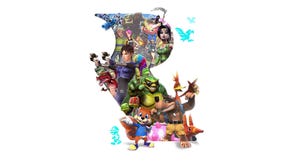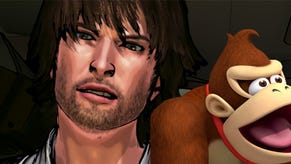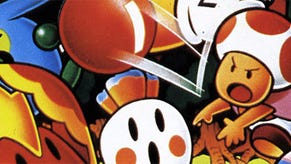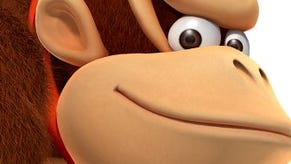Super NES Retro Review: Donkey Kong Country
Join us as we review every Super NES Classic game. Next up: Let's monkey around.
This article first appeared on USgamer, a partner publication of VG247. Some content, such as this article, has been migrated to VG247 for posterity after USgamer's closure - but it has not been edited or further vetted by the VG247 team.
Join us as we review all the games on the SNES Classic Mini Edition in chronological order!
1994 was an incredible year for SNES games. Now, decades later, we still sing songs of praise for '94 gems like Super Metroid and Final Fantasy III. However, 1994 was also a troubling year for the 16-bit market in general. Developers were nearly done squeezing every drop of power from the SNES and Genesis' plucky little processors, and the PlayStation's siren song was drifting in loud and clear from overseas. The End was Near. Not simply for 16-bit systems, but for cartridge-based games, period.
Nintendo did its best to stay calm; its efforts to seem as hip and cool as the Sega Genesis were finally starting to pay off (even though looking at "Play it Loud" commercials today makes me take a deep breath and press my lips together in a straight line). Sega was ready with the Saturn, but the N64 was still some miles down the road. Nintendo had to keep the SNES' momentum going, and it did so by convincing the masses that next-gen graphics were possible on its system.
And, honestly, Rare's Donkey Kong Country made a good argument for Nintendo's case. While the game's pre-rendered sprites look frayed by today's standards, there was nothing else like it on the SNES – and certainly not on the Sega Genesis, Nintendo gloated. Moreover, "computer rendering" was a hot buzz term thanks to Jurassic Park's much-publicized dinosaur effects (the best of which were executed using puppetry, but that's a kitchen-raptor of a different color), and that did a lot to bolster Donkey Kong Country's hype and subsequent sales.

It's trendy to look back at Donkey Kong Country and say "Boy, were we taken for a ride! The graphics were great for the time, but nothing about the game has held up. It's just an average platformer."
I disagree. While Donkey Kong Country 2 improves over its predecessor in wide strides, the first game is a solid 2D action title that's still enjoyable to play through. True, its platforming isn't as complex or interesting as Super Mario World's or Mega Man X's; most of the levels push you from left to right and don't encourage much exploration beyond "find breakable walls for bonus rooms" (and said bonus rooms only offer one-dimensional puzzle games for extra lives and other unimpressive prizes). Still, Donkey Kong Country's gameplay flows well, and its levels boast a surprisingly oppressive atmosphere that was uncommon in platformers at the time.
That's not to suggest Donkey Kong Country is a "dark" or "gritty" game in any form; the main plot deals with Donkey Kong trying to rescue his stolen banana horde. That's not exactly gripping drama. Rather, Donkey Kong Country eschews other platformers' sunny skies and green hills for dripping caverns, dimly-lit treetops, rainstorms, and industrial zones. Snow Barrel Blast, a personal favorite, gradually smothers you in a snowstorm as you progress through the level. You can practically feel the bits of ice and snow sting your eyelids while you play.

Veteran Rare composer David Wise still deserves props for Donkey Kong Country's soundtrack, as it lends favorably to the game's memorably oppressive atmosphere. Aquatic Ambiance is remixed to this day, and Wise himself re-visited Fear Factory in Donkey Kong Country: Tropical Freeze.
Donkey Kong Country also benefits from its "buddy tag" system. Kong's little pal, Diddy, plays differently from the big ape: Whereas Kong's weight makes it easier to dispatch big foes and hurl barrels with devastating strength, Diddy specializes in quick movements and high jumps that are ideal for finding hidden areas. In other words, the extra Kong who tags alongside you is more than a meat-shield engineered to absorb an extra hit. The strategy you employ is dependent on which simian takes point. If you want to play a little more slowly and not worry about well-armored enemies, Donkey Kong is a good choice. If you want to blaze through a level recklessly and find hidden stuff, Diddy Kong satisfies your need for speed.
Are there parts of Donkey Kong Country that demonstrate how pre-rendered graphics and the SNES processor are an unholy coupling that was never meant to be? Oh, sure. The paper-thin backgrounds are cringe-inducing, and it's clear zero resources were spent on the game's incredibly uninspired bosses (kudos to Rare for getting away with "Necky's Nuts," though, to say nothing of the fact you can ride on a frog named "Winky").
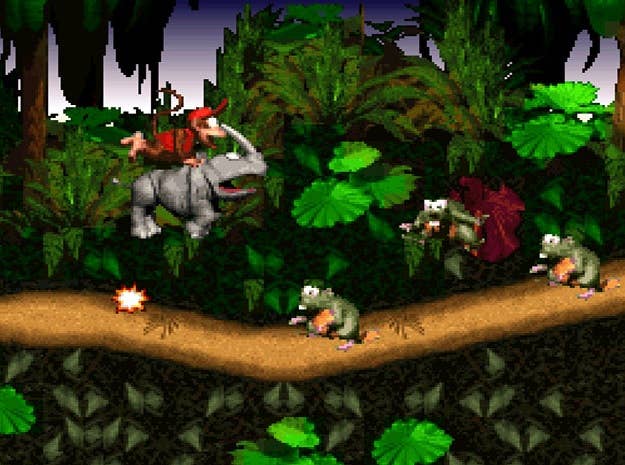
Frankly, I'd much rather have Donkey Kong Country 2 on the SNES Classic Edition, as it improves on Donkey Kong Country in every way. Its levels are much more interesting, its secret rooms are much more rewarding, its graphics hold up surprisingly well, and even its soundtrack is superior to Wise's excellent series debut. But that's not to suggest Donkey Kong Country is a poor game in any regard. It plays second banana to much of the SNES Classic's line-up, but there's plenty of chest-pounding fun in its levels.
ConclusionDonkey Kong Country isn't as mind-blowing as it was in '94, but it's still a great platformer. Its unique atmosphere, its buddy-tag system, and its excellent soundtrack all add up to an SNES experience that's not stellar, but it's as solid as a vest made from real gorilla chest.


